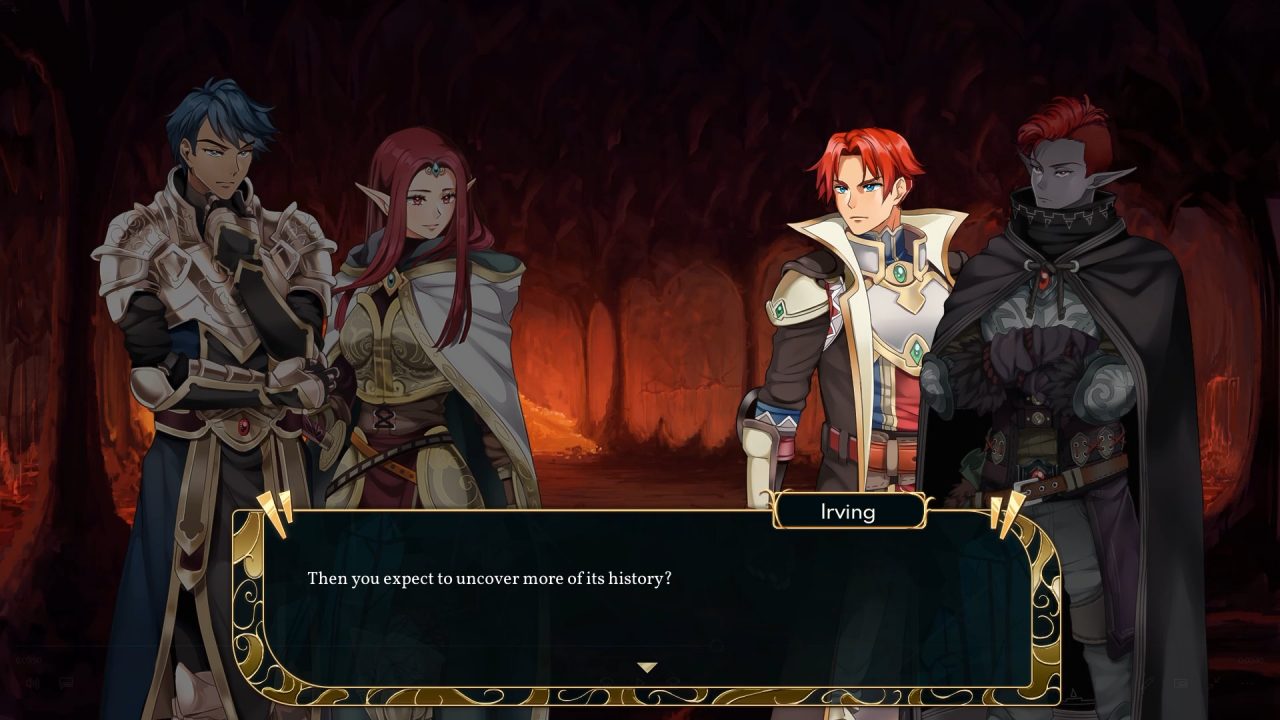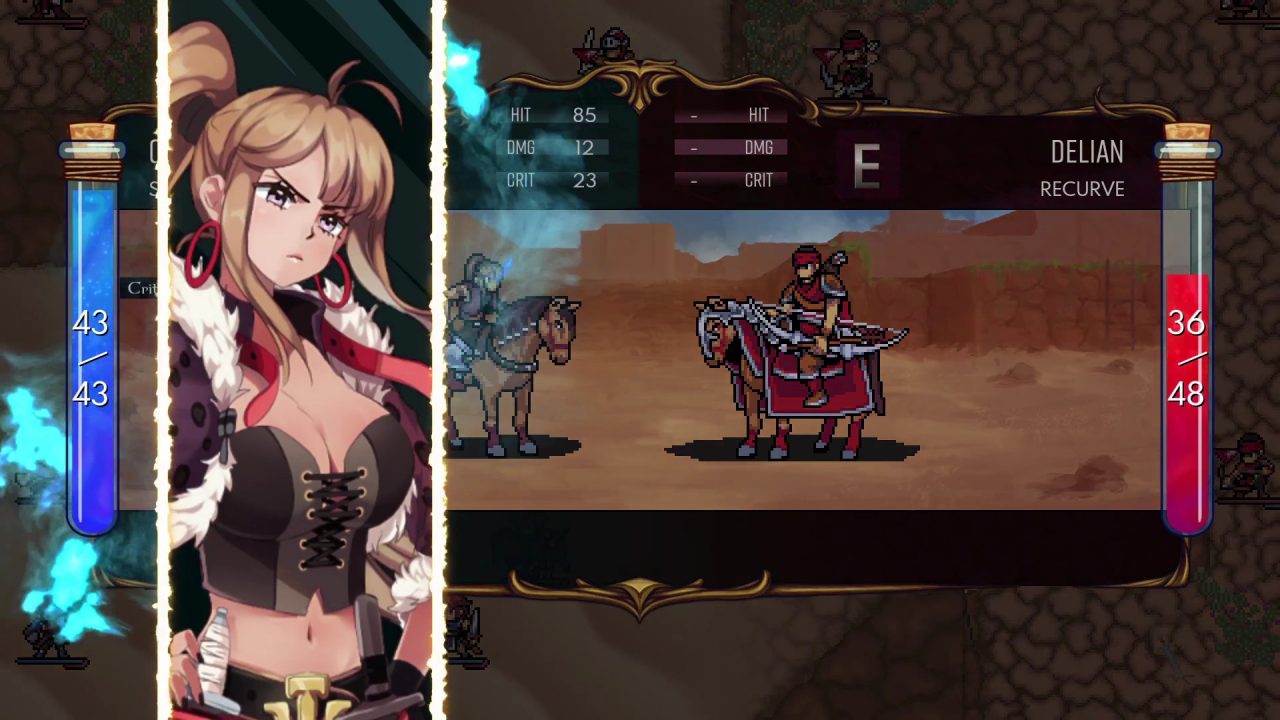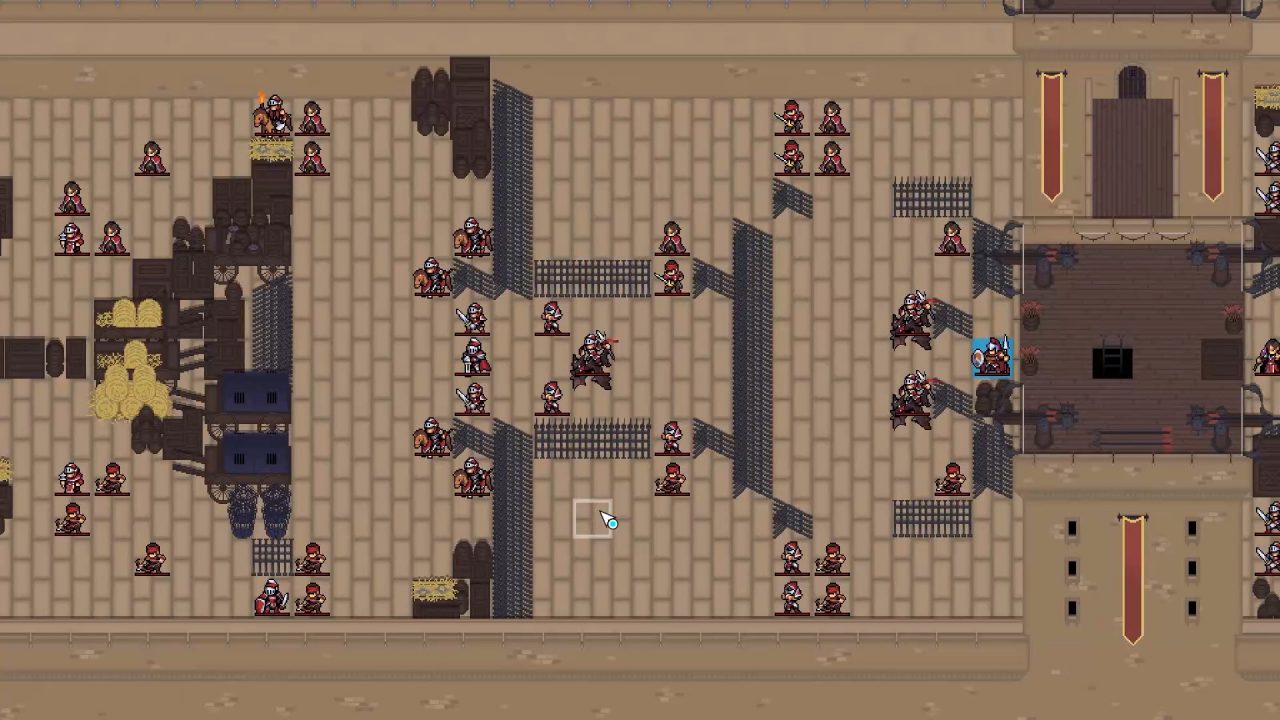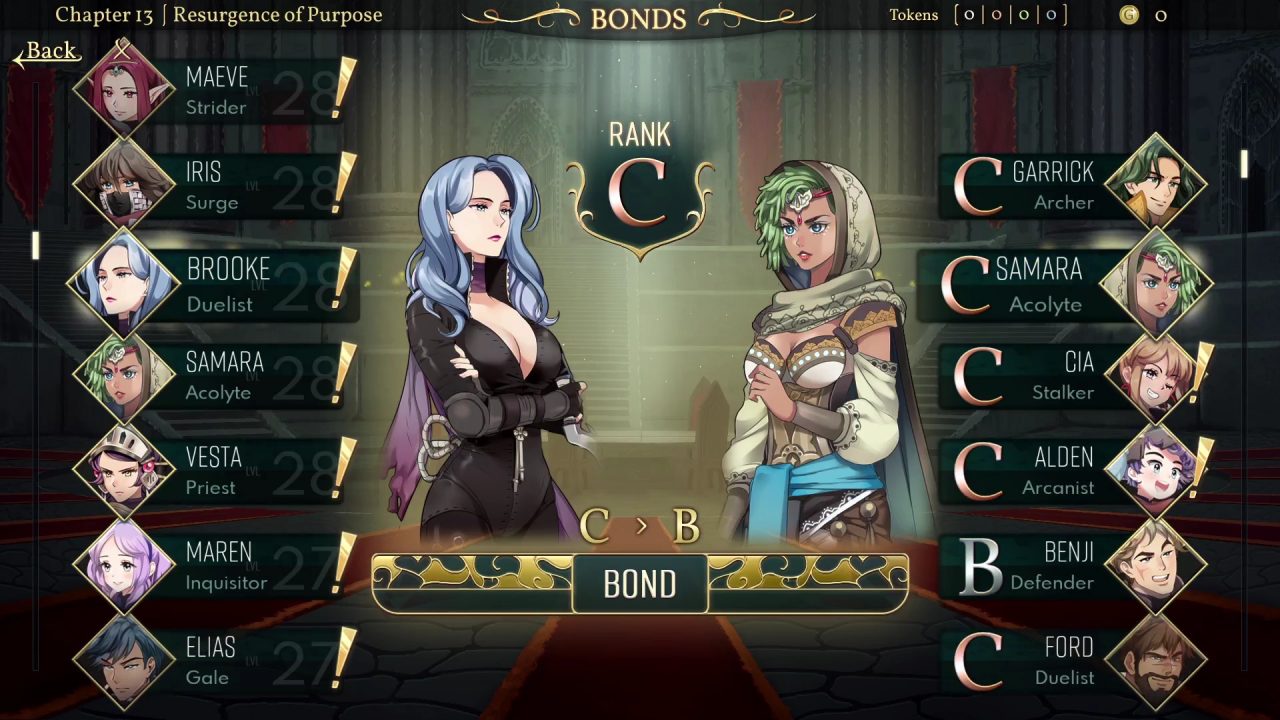I knew very little about strategy RPG Dark Deity before spending time with it during E3 2021‘s media days, which was something of a shame as I was instantly intrigued by the title’s polished gameplay mechanics and readily available customization options. Dark Deity was obviously made with a lot of care and effort, and I was subsequently so taken in during the preview that I couldn’t wait to fully jump into the game for myself. What I discovered when I got to experience Dark Deity in its entirety is that the game’s twenty-eight story battles prove to be a very solid outing for SRPG enthusiasts.
The plot of Dark Deity is standard fantasy fare for those already familiar with the genre. A great Calamity nearly brought the entire world to ruin in the distant past, and magical artifacts from that timeframe known as Eternal Aspects are now sought after by shadowy figures for nefarious purposes as war threatens to overwhelm the land. King Varic of the Delian Kingdom decides to draft even the first-year students of a prestigious military academy to bolster his army’s ranks as the fighting comes to a head. Irving, Garrick, Maren, and Alden are four such students forcibly recruited. They soon become embroiled not only in the immediately visible conflict, but also in one brewing just beneath the surface as they’re joined by a motley band of heroes along the way. The plot might not be the most original, but it admirably serves its purpose of moving the game along. It is an overall enjoyable yarn with some amusing tongue-in-cheek moments throughout. I didn’t find myself often surprised by the narrative, but I became invested all the same, which I find isn’t often the case in similar tales.

The characters that make up Dark Deity‘s party roster are a likable bunch and a large part of why I enjoyed the story. There are thirty playable characters in the cast, and I found myself surprised by the amount of growth and development several of them displayed. Sloane, Elias, Liberty, Cia, Bianca, Iris, Caius, and the fourth-wall-breaking Faust were standouts in the cast, though most of the party ultimately grew on me and showed depth beyond their initial character tropes at various moments. Not only were characters often featured with surprising prominence throughout main story cutscenes, but Dark Deity also features bonding events where two party members who have been out in battle together have special, insightful conversations amongst themselves. These bonding events often provide further insight into the characters as well as their personal motivations, and I appreciated how they celebrate all types of bonds since some depict romantic connotations while others explore more familial and friendly relationships. Each character has ten others in the party they can form these special Bonds with. There are three levels to every Bond, with some locked until after certain story scenes. Given the sheer number of characters in the party and the fact that there is a set number of battles to fight through, it is impossible to max out everyone’s bonds in one playthrough, though that also helps provide the game with replayability.
Chapters in Dark Deity consist of campsite preparation where the player can peruse character stats, buy and equip items, upgrade weapons, and view acquired bonding events, then advancing into battle. Equipping a special item called an Eternal Aspect to a character’s first item slot grants special stat bonuses. Every job class has four different weapon types with varying strengths and weaknesses; you acquire or purchase tokens to update a particular weapon type to the next available tier, with Tier 4 being the maximum available. Because each weapon type has a corresponding one that it is stronger or weaker against, you can switch between weapons even during the heat of battle to give yourself as much strategic advantage as possible during skirmishes.
Battles are pretty straightforward affairs to those already familiar with grid and turn-based SRPGs, and those who know Fire Emblem Awakening or Fire Emblem Fates might be at even more of an advantage. Character units start a fight at a certain point on a map and are given an objective to reach to clear the stage. There are often a myriad number of foes to contend with between you and said objective, and a fight ensues the second an enemy or one of your party gets within range of one another. A skirmish’s outcome depends on your character’s level, selected job class, and equipped weapon. Players have to experiment to find the best strategies for clearing a stage, especially when considering the differing weapon types and the character’s job class and unique skills.

Dark Deity’s job class system is an interesting one that adds yet another layer of strategy. Characters all start with a base class they can upgrade once they reach a certain level, with four differing jobs to choose from. You can’t reclass a character once you initially pick a new job for them, so you better be satisfied with your selection, as you’re stuck with it until you reach Level 30. You can then pick a new job and skill set out of four “ultimate” jobs. Once again, you’re stuck with whatever job you end up picking for your character, but skills from previous learned jobs also carry over into the new profession, allowing you to tailor an individual character’s skillsets to your personal preferences. The way jobs are presented in this game offers some strategy that I found quite fun to experiment with, given how large the cast is. Aegis, Phantom, Outlaw, and Windrunner were some of my favorite classes once I reached them!
Customization also goes beyond merely playing around with weapon types and job classes. When starting up a new game, players can choose between three difficulty levels as well as the option to customize key aspects of their campaign, such as increasing or decreasing the amount of experience and gold you might get or randomizing the enemy classes or items out on the field. You can tailor the game to be as straightforward or as challenging as you’d like given this feature, and playing around with it ensures a wholly unique experience every time you start up a new campaign. There is also no such thing as permadeath in Dark Deity. Characters who are defeated in battle retreat from the field while sporting a grave injury that will decrease one of their stats. I lost Irving once in a particularly tough fight, and the poor guy lost a finger and some Dexterity points. Have a certain character retreat a great deal, and they could be at a considerable tactical disadvantage in future encounters. This helped me think carefully about where I sent individual units, but I also never felt as if I was being punished too strongly if I happened to make a mistake.

Even battles have a level of strategy emphasized in their completion. Speeding through a fight means more gold in the long run, though you’ll sacrifice experience in doing so. While you only have the twenty-eight fights to go through, I was pleasantly surprised to find that the objectives were quite varied from one to the next. You don’t just always “rout all enemies” from the field. Sometimes you have to maneuver through a growing cloud of poisonous gas after acquiring a rare item, or you need to reach a specific location on the map. Certain fights could drag on at times depending on the objective, but I never found myself growing bored with any of them as I figured out the best way to approach each specific stage.
The battle system and gameplay mechanics in Dark Deity are incredibly polished and robust, though I do feel there is a lack of direction given to players at first on how to approach them. You are sort of thrown into the thick of things without any real tutorial to speak of, relying on (hopefully) having some prior knowledge of how SRPGs work to figure out what to do. If I was someone who hadn’t seen the preview beforehand or already acquainted with the genre, I could see being initially confused over what to do.
Another negative I noticed was that there did seem to be some heavy loading when battles were first setting up. My computer might not have been the best rig for the game, though, as it sometimes would pause and throw me out. Fortunately, I was always able to resume quite easily when this occurred with no penalty, so I was never frustrated by it. For the most part, I found that the game ran smoothly and my controller config was easy enough to use with it.

Graphically, the sprite work for the game is colorful and eye-catching, though there is a lack of variety as far as enemy sprites are concerned. There is also quite a large dissonance between how characters look in sprites and the artwork used for them in the game itself. The character art is gorgeous, and I loved the vibrant visual novel still art used for important story scenes. The UI was quite eye-catching as well, with a lot of detail to it! Sometimes the animation during fights could be a bit on the slow or repetitive side, though you’re given the option to skip it if you’re so inclined. Dark Deity’s music is engaging and often helps to set the stage of a specific scene or battle. The limited voice acting is also well done and nicely emoted. All in all, the sound helped better convey the overall story experience.
I found myself immensely enjoying the time I spent playing Dark Deity. It particularly reminded me of playing some of the more recent Fire Emblem titles like Awakening and Fates, but I arguably found myself becoming more invested in the plot and caring even more for its characters. The gameplay, while somewhat reminiscent of those Fire Emblem titles, also provides some key differences that help greatly emphasize the strategy component of the game’s campaign. To SRPG fans looking for another Fire Emblem-esque experience, I’d wholeheartedly recommend giving Dark Deity a chance. It is a truly enjoyable addition to the genre, and one I’m glad I got the chance to further peruse.



